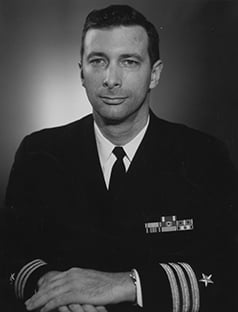One of the most stirring sights for many of us is a painting of a full-rigged ship with all sails set, surging through a beautiful sea while overhead, puffy clouds proclaim beautiful weather. Such a ship might be displaying more than three dozen sails, comprising more than an acre of canvas aloft, and each of them with its own name.
If we consider just the middle mast—the mainmast—and begin at the lowest sail, we first have the “main sail” or “main course.” Next above it, in a man-of-war, comes the “main topsail,” the largest single sail in the ship, and so, a prime mover. (In many latter-day merchant sailing ships and the clippers, topsails were divided into “upper” and “lower” as a way to provide the same sail area in sizes more convenient to handling by smaller crews The third sail up was the “main topgallant sail,” obviously narrower in both dimensions than the sails below. Still higher up was the “main royal sail,” a still smaller sheet used in light wind conditions, and the smallest in common use. A final, rectangular scrap of sail that was fairly common was the “skysail,” one so small that it was set, yardarm and all, from a position lower down on the mast.
A number of other sails might be found above the aforementioned, but their presence was a matter of individual skipper’s whim, and their names were consistent only in that most referred to close contact with the dome of the heavens. When speaking of these, one might hear such image-evoking terms as “moonraker,” and “stargazer.” And with the advent of a 13-story building ashore around 1890, one of these inspiring old sail names came ashore: “skyscraper.”



